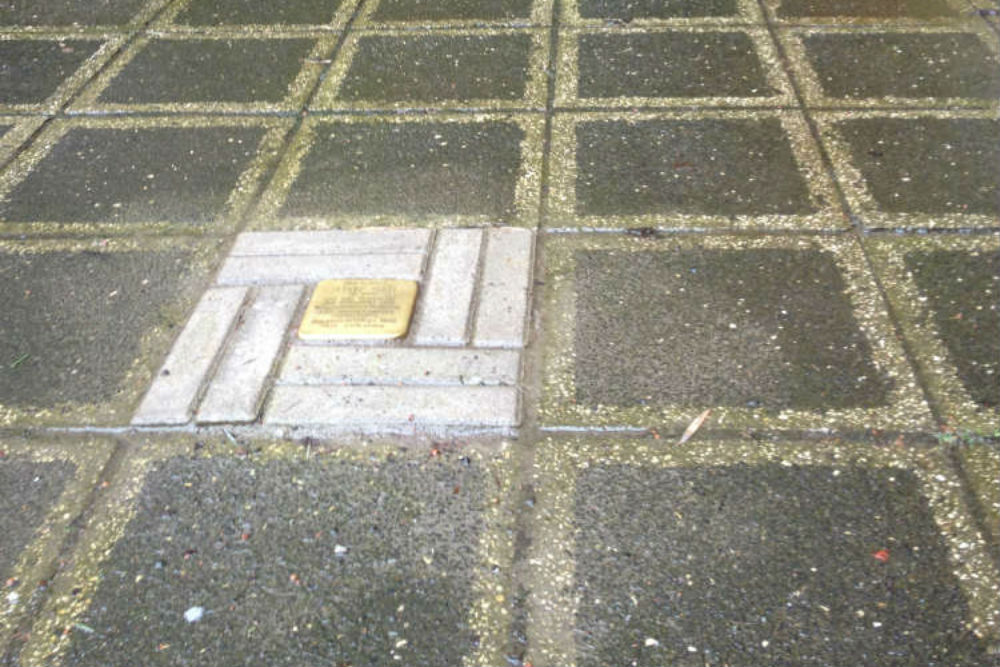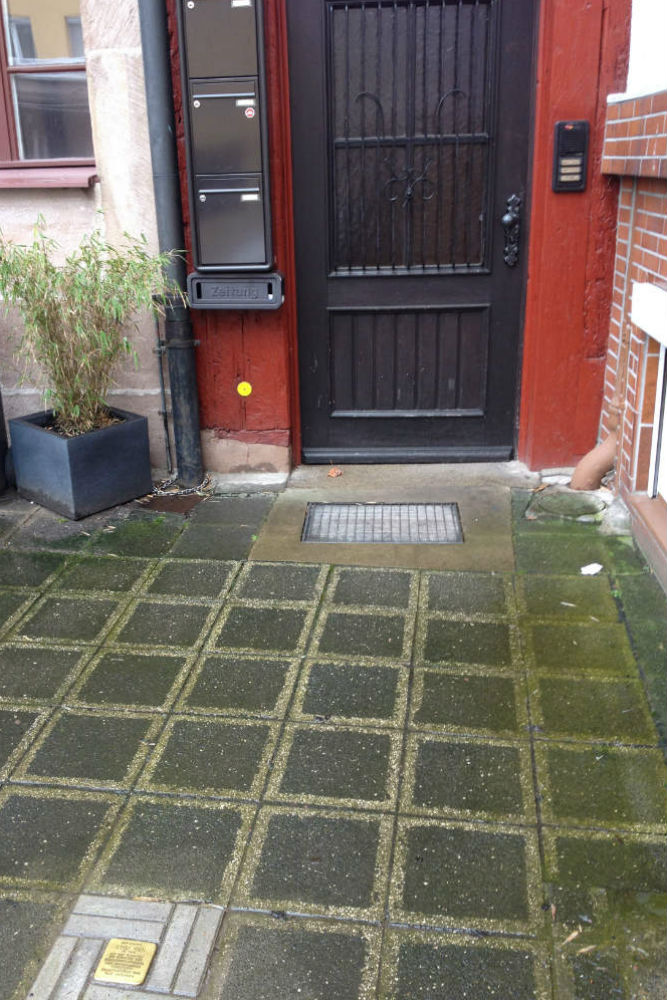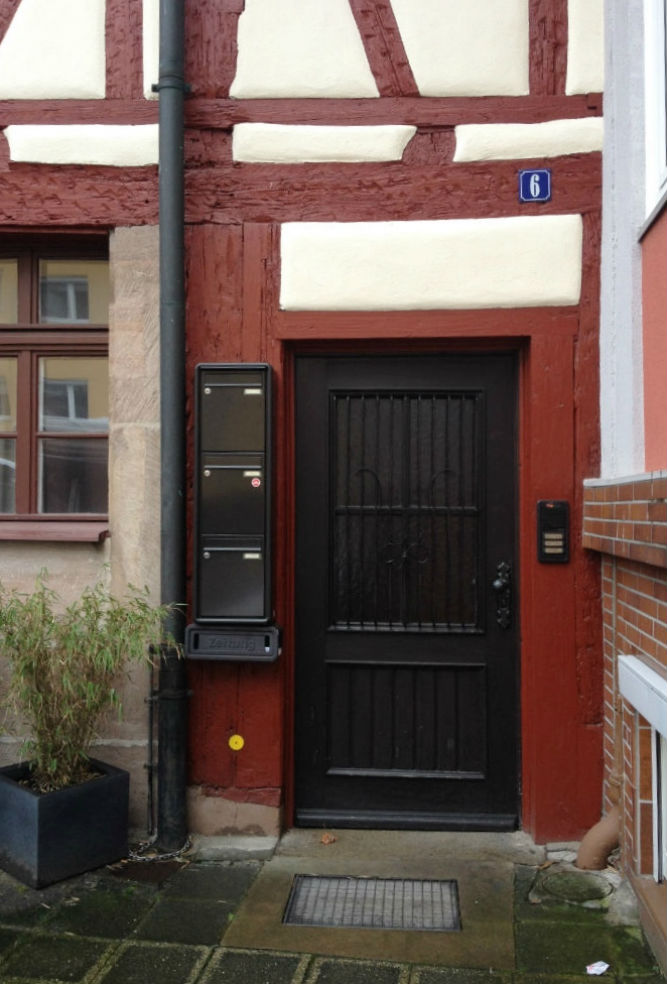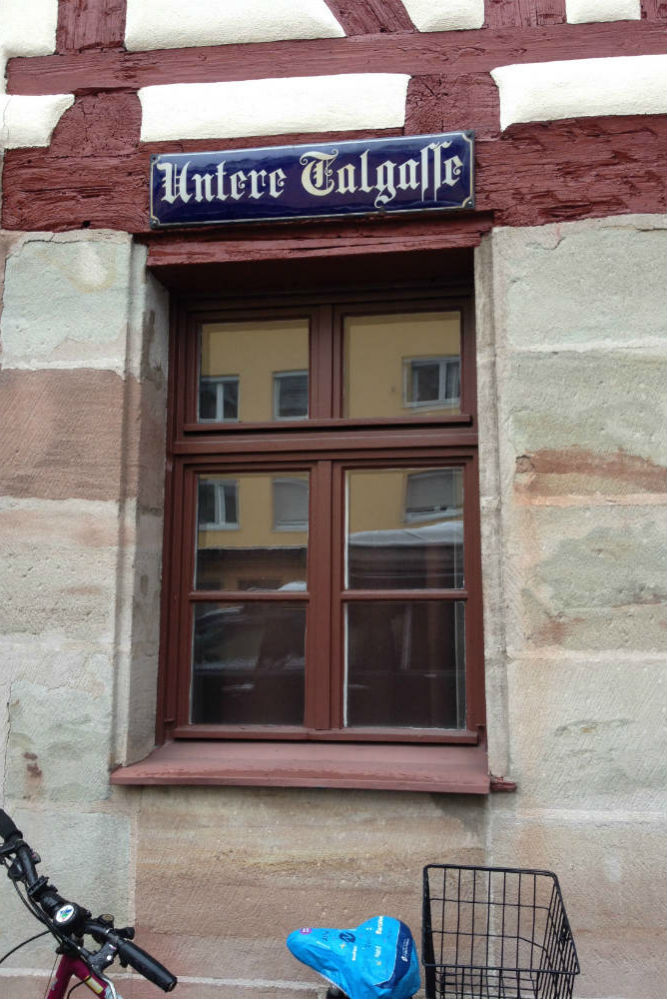Stumbling Stones Untere Talgasse 6
Stolperstein / Stumbling Stone for:
* Rudolf Koch, born 1918, imprisoned since 1937 under §175, preventive detention, 1940 Sachsenhausen, Flossenbürg, unwillingly castrated in 1941, released in 1942.
In Nürnberg (Nuremberg), the police imposed harsh restrictions on homosexuals in the 1930s. Rudolf Koch was arrested and sentenced in 1937 under "Gay Paragraph 175" (§175). In 1940 he was sent to Sachsenhausen, then to Flossenbürg, where the only way he could leave was by being "voluntarily" castrated in 1941. He was 23. He was then released and he survived the war.
Sachsenhausen was built in 1936 to reflect SS world view and to subdue prisoners to SS power. The first prisoners were political opponents of Nazism. Then starting in 1938 prisoners included persons deemed to be racially or biologically inferior and finally in 1939 citizens (including POWs) from occupied countries were added. Prisoners died of hunger, exhastion, illness, cold, experiments, murders and executions.
Flossenbürg started as a camp for criminals, the toughest of whom dominated the camp throughout its existence even as other types of prisoners were added. The Nazis considered these prisoners to be disposable and forced them to work under harsh conditions ("destruction through labor"). Laborers first mined granite for Nazi monuments and then made parts for Messerschmidt ME-109 aircraft.
"Stolpersteine" is an art project for Europe by Gunter Demnig to commemorate victims of National Socialism (Nazism). Stolpersteine (stumbling stones) are small, 10x10cm brass plaques placed in the pavement in front of the last voluntary residence of (mostly Jewish) victims who were murdered by the Nazis. Each plaque is engraved with the victim’s name, date of birth and place (mostly a concentration camp) and date of death. By doing this, Gunter Demnig gives an individual memorial to each victim. One stone, one name, one person. He cites the Talmud: "A human being is forgotten only when his or her name is forgotten."
Do you have more information about this location? Inform us!
Source
- Text: Anne Palmer
- Photos: John Mark Shorack
- Nordbayern 17.10.2017: Neue Stolpersteine
- Memorial and Museum Sachsenhausen
- holocaust.cz: Flossenbürg
- Stolpersteine.eu
Nearby
Museum
- Museum Historical Rock-cut Cellars - Nürnberg
- Museum Art Bunker - Nürnberg
- Germanisches Nationalmuseum - Nürnberg
Point of interest
- St. Katharina Church Ruins - Nürnberg
- Gauhaus von Franken - Nürnberg
- Grand Hotel Nuremberg - Nürnberg
Monument
- Memorial Leo Katzenberger - Nürnberg
- Memorial Main Synagogue Nürnberg - Nürnberg
- War Memorial Bildungszentrum Nürnberg - Nürnberg
Cemetery
- German War Graves 1693 - 1919 Nuremberg - Nürnberg
- Collective Grave Franco-Prussian War Fürth - Fürth
- German War Graves Städtischen Friedhof Fürth - Fürth
Remembrance Stone
- Stumbling Stones Theodorstraße 3 - Nürnberg
- Stumbling Stones Theodorstraße 5 - Nürnberg
- Stumbling Stones Blumenstrasse 9 - Nûrnberg







